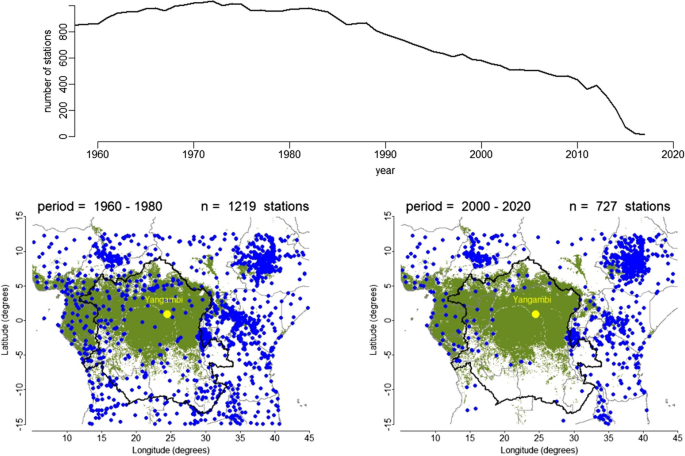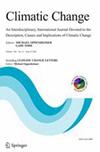Ground-based climate data show evidence of warming and intensification of the seasonal rainfall cycle during the 1960–2020 period in Yangambi, central Congo Basin
IF 4.8
2区 环境科学与生态学
Q1 ENVIRONMENTAL SCIENCES
引用次数: 0
Abstract
Abstract Meteorological stations are rare in central Africa, which leads to uncertainty in regional climatic trends. This is particularly problematic for the Congo Basin, where station coverage decreased significantly during the last few decades. Here, we present a digitized dataset of daily temperature and precipitation from the Yangambi biosphere reserve, covering the period 1960–2020 (61 years) and located in the heart of the Congo Basin. Our results confirm a long-term increase in temperature and temperature extremes since the 1960s, with strong upward trends since the early 1990s. Our results also indicate a drying trend for the dry season and intensification of the wet season since the early 2000s. Ongoing warming and increasing precipitation seasonality and intensity already have a significant impact on crop yields in Yangambi. This calls for urgent development of climate-smart and dynamic agriculture and agroforestry systems. We conclude that systematic digitization and climate recording in the Congo Basin will be critical to improve much-needed gridded benchmark datasets of climatic variables.

地面气候数据显示,1960-2020年期间,刚果盆地中部Yangambi地区的季节性降雨周期变暖和加剧
中非地区气象站稀少,导致区域气候趋势存在不确定性。这对刚果盆地来说尤其成问题,在过去几十年里,那里的气象站覆盖率显著下降。本文利用位于刚果盆地中心的Yangambi生物圈保护区的数字化日气温和降水数据集,涵盖1960-2020年(61年)。我们的研究结果证实,自20世纪60年代以来,温度和极端温度长期增加,自20世纪90年代初以来有强烈的上升趋势。我们的研究结果还表明,自2000年代初以来,旱季呈现干燥趋势,雨季加剧。持续的气候变暖和降水季节性和强度的增加已经对Yangambi的作物产量产生了重大影响。这就需要紧急发展气候智慧型和充满活力的农业和农林业系统。我们得出结论,刚果盆地的系统数字化和气候记录对于改善急需的气候变量网格基准数据集至关重要。
本文章由计算机程序翻译,如有差异,请以英文原文为准。
求助全文
约1分钟内获得全文
求助全文
来源期刊

Climatic Change
环境科学-环境科学
CiteScore
10.20
自引率
4.20%
发文量
180
审稿时长
7.5 months
期刊介绍:
Climatic Change is dedicated to the totality of the problem of climatic variability and change - its descriptions, causes, implications and interactions among these. The purpose of the journal is to provide a means of exchange among those working in different disciplines on problems related to climatic variations. This means that authors have an opportunity to communicate the essence of their studies to people in other climate-related disciplines and to interested non-disciplinarians, as well as to report on research in which the originality is in the combinations of (not necessarily original) work from several disciplines. The journal also includes vigorous editorial and book review sections.
 求助内容:
求助内容: 应助结果提醒方式:
应助结果提醒方式:


